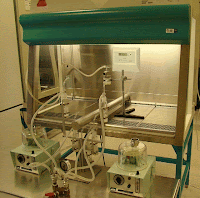Entradas
Mostrando las entradas de octubre, 2015
| Lista de correo. Espere su aprobación. |
| Consultar este grupo |
Nobel Prize-winning Drug May Prevent Malaria Transmission
- Obtener vínculo
- X
- Correo electrónico
- Otras apps
A cluster randomised trial of cloth masks compared with medical masks
- Obtener vínculo
- X
- Correo electrónico
- Otras apps
Laboratory-Acquired #Dengue Virus Infection—A Case Report #LAIs
- Obtener vínculo
- X
- Correo electrónico
- Otras apps
MERS-CoV Outbreak in the Republic of Korea, 2015
- Obtener vínculo
- X
- Correo electrónico
- Otras apps
Accidental Infection of Laboratory Worker with Vaccinia #LAIs
- Obtener vínculo
- X
- Correo electrónico
- Otras apps
NSF/ANSI Standard 49 Certification Testing of Biosafety Cabinets
- Obtener vínculo
- X
- Correo electrónico
- Otras apps
Freedom and Responsibility in Synthetic Genomics: The Synthetic Yeast Project
- Obtener vínculo
- X
- Correo electrónico
- Otras apps
Hoy cumplimos 1 millón de visitas. Gracias por visitar nuestro blog
- Obtener vínculo
- X
- Correo electrónico
- Otras apps
The Hidden Geometry of Complex, Network-Driven Contagion Phenomena
- Obtener vínculo
- X
- Correo electrónico
- Otras apps
NOM-018-STPS-2015, Sistema armonizado para la identificación y comunicación de peligros y riesgos por sustancias químicas peligrosas en los centros de trabajo.
- Obtener vínculo
- X
- Correo electrónico
- Otras apps
PODCAST: #Nobel Prize in Physiology or Medicine 2015
- Obtener vínculo
- X
- Correo electrónico
- Otras apps
Quaternary Ammonium Biocides: Efficacy in Application
- Obtener vínculo
- X
- Correo electrónico
- Otras apps
Biological Risks and Laboratory-Acquired Infections: A Reality That Cannot be Ignored in Health Biotechnology #LAIs
- Obtener vínculo
- X
- Correo electrónico
- Otras apps














